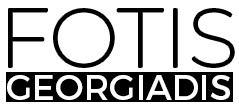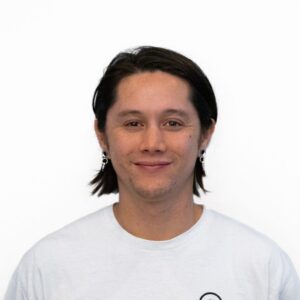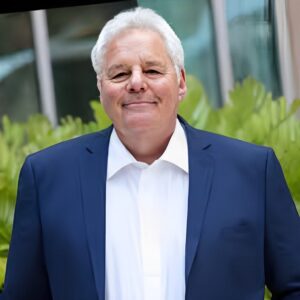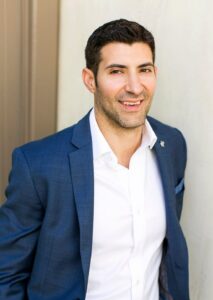An Interview With Fotis Georgiadis
“Commit yourself and then figure it out”. It was the advice from Bob Jenkins (LBS) and it basically means that you need to feel comfortable with the unknown or else you will never start the quest.
As a part of our series about business leaders who are shaking things up in their industry, I had the pleasure of interviewing Sergio Álvarez Teleña.
Before founding SciTheWorld Group, a start-up focused on algorithmic end-to-end technology and algorithmic research where he is Chief Innovation Officer, Sergio Álvarez Teleña was Global Head of Data Science and also Global Head of Algorithmic Trading at BBVA. More recently, Sergio has been appointed by the Spanish Ministry of Economy as an expert on AI Innovation & Marketing to the OECD-based Global Partnership on Artificial Intelligence (GPAI) and he is a vocal member of the Spanish group of the forthcoming ISO on A.I. and Big Data.
Thank you so much for doing this with us! Before we dig in, our readers would like to get to know you a bit more. Can you tell us a bit about your “backstory”? What led you to this particular career path?
I come from a humble origin in a sea-side town from the North of Spain, Gijón. Rough, but I loved it there. I actually was a cabinet maker back then (working at my father’s workshop) but I was also good at studying. As such, I had the chance to enter the Master of Bank of Spain with a fellowship. So I moved to Madrid.
After finishing the fellowship, I moved to Japan to study the role of bots in Finance (Kyoto University). It sounds great today but it looked like a crazy move back in 2005. While in Japan I understood they were very advanced in industrial robotics in terms of automation not in terms of thinking. In fact, the “intelligent” part was only industrially unlocked in the 2010s, after big data brought the right infrastructure.
I then went back to Madrid and worked for Santander — fixed income with exotic coupons. We did so well that I was called by a former employee to join him at Morgan Stanley’s equity trading — custom baskets. We quadrupled P&L before Lehman’s collapse. The opportunity cost of leaving the industry fell massively and I went back to academia. Again focusing on bots in finance. Interestingly enough 2009 was a completely different landscape — the explosion of big data and open source had triggered the possibility to apply science at a completely new rate. Lucky for me, the UK Doctoral Training Centre for Financial Computing (UCL, LSE, LBS) was just starting so I joined the first cohort. I was able to get Renaissance Technologies’ CEO in Europe to be my industry supervisor for the MRes and PhD Thesis. So I enjoyed a highly steepened learning curve.
After finishing my MRes, I received offers from some of the best hedge funds in the world; but, I wanted to have more than a job. I wanted to transform a company. BBVA asked me to join as an equity trader and, looking crazy to the eyes of many again, I agreed to join. The transformational experience was awesome. If traders are typically aggressive at work, you can only imagine how much they are when it comes to their change resistance. I loved it, and as I didn’t plan to spend the rest of my career there, when they weren’t ready for the amount of professional risk I was willing to take to push the frontier forward I moved on.
That was the early-mid 2010s where, again, transformation wasn’t really a thing yet. I managed to pivot upon a few smart senior managers (very especially, the Global Head of Markets, Toño Ordás, as well as two senior managers Fran Clavero and Julio Sobremazas) and eventually, we got the prize for the best trading platform in Europe. That proved my point both professionally and academically: “the Machine in Machine Learning” (the M in ML) is the real product — pretty much what Elon Musk calls nowadays “The factory is the product”.
Meanwhile, the Thesis got several recognitions; it became the backbone of an early book on algo trading upon it (2012); it introduced “Avatar Calibration” technology very much in vogue nowadays due to the metaverses…
I soon left BBVA to build SciTheWorld. Then I was called back to help at a key phase and became Head of Global Data Science for almost a year before I finally left for real. At SciTheWorld we spent 6 years evolving the M in ML and became pioneers of several things, amongst them, Federated Algorithmics. We work for some of the most relevant players out there — from SMEs to hedge funds and national entities.
So — and sorry for the long intro — if you asked what led to my particular career path, I would always say the same: humble origins in a great town where I couldn’t really develop my career. The humble side makes me value any economic outcome positively hence, I ‘ve always been more willing to take risks than most of my colleagues. The fact that I already had to leave my city, my folks, meant that I was already out of my comfort zone, so I had the whole world to recycle if things went wrong — not just one city, one culture.
Can you tell our readers what it is about the work you’re doing that’s disruptive?
When it comes to disruption, I like conveying a warning first: disruption sounds great but, commercially, it is a burden. In order to sell, you rather go down the path of incremental innovation.
So, why do we still go for disruption, then? Well, when it comes to technology it all boils down to legacies. If you create your company technologically wrong you will definitely suffer. A lot. If you do it right, though, it can definitely become your major competitive advantage out there. We used to say that we focus on the M in ML (the Machine in Machine Learning). But Elon Musk is lately saying it more eloquently: the factory is the product. So, to get the product right, you need to get your factory right. We spent 6 years developing ours as we wanted it to be very special.
Special in what sense? Synergies. There’s a lot of people talking about exponential technologies but they mostly refer to selling the same to more and more people. That’s ok. But that’s not awesome. And definitely not the backbone of the whole exponential concept in Microeconomics. Exponential has much more to do with the way a company is structured. In our case we create algorithmic technology that can reach all departments (E2E) and thus, it unlocks incremental innovations that couldn’t have been done before. For that we often have to create extended production architectures (EPAs).
So the technology is disruptive itself (barrier to entry to our competitors) and generates unseen incremental innovation. That side is the commercial one. The way we have to avoid the aforementioned burden that kills many innovative companies — none of the companies we considered peers when we started are still open.
So, we create disruptive technology development towards incremental innovation sales. Don’t we sell disruption as well? Of course we do. And it’s the funniest part, actually. As of now, we are pioneers of several disruptive things. Let me give you 3 examples.
In finance, we have one of the most efficient platforms for algo trading. That’s great but not disruptive — it was the top end hedge funds like Renaissance Technologies who disrupted the industry. But, since we started with less legacies than most agents in the markets, we can reach levels of E2E coordination not known before. For instance, we can let the risk department track the behavior of live trading strategies and, if they find one that is misbehaving, launch a new strategy that travels within the platform and clicks itself to the trader’s one to take over. We use it as a trigger for discussion at sessions with the managers of the risk departments in energy across Europe.
In companies, what we do is Algorithmization. We take them from a digital stage and create new on-platform protocols, E2E, for every employee to start cooperating. As said, we often provide them with EPAs to break silos maximally so that departments become horizontals rather than verticals. Where is the disruption here? Augmented Machines. Along the process we give new roles to the experts in order to help the machines overcome their limitations in novel ways. Once the change resistance is properly managed, the company flows at a completely different speed.
Across companies, what we do is Federated Algorithmics. From the beginning of those 6 years of development we were also obsessed with IP protection towards open industries — the stage where partnerships across players becomes their new competitive advantage.
Many people were impressed with the fact that we had Avatar Calibration technology already 10 years ago when metaverses are starting to grab everyone’s attention just now. But, to be honest, it is far too disruptive to keep evolving it just yet. So we are just waiting there.
Can you share a story about the funniest mistake you made when you were first starting? Can you tell us what lesson you learned from that?
I lost half a million dollars in a day. While I was working for Morgan Stanley there was this day when the father of all operational risks came to see me. I had this screen where I received trading orders (flow) from our clients through our sales. I took one of the orders and started trading it. A few minutes later someone from the sales department called me sort of embarrassed. He wasn’t too clear about what happened and simply said something like: “Hey, Serge, I have had an issue with my computer and I had to change something… do you see my order on the screen? Everything ok?”. And I said: “Sure mate, all is ok”. His trade was there, nothing had happened and I was trading accordingly.
But then, as time went by, I enjoyed a bit of coffee, a chit-chat here and there with my colleagues.. I realized something’s wrong. I thought, ‘too low flow’. So I checked “what’s going on today with the flow, mates?”. And the answer from my boss, Matthew Tagliani, great professional, was something like “nothing, just you being a bit lazy today, probably”. What? Lazy? I worked crazily — we were already more than doubling the P&L from the previous year. So I checked and, to my surprise, that screen for flows was frozen from the early morning. Once sorted I saw I was losing money but didn’t quite manage to figure it out as I had to catch up with the activity. I kept losing money until I raised my hand for Matt’s help. After the markets closed we found out — the fuzzy action from the sales was that he changed its side! I was buying when I should be selling. And his client was right so my deviation made me lose a lot of money. Matt’s boss, Geoff Craig, wasn’t too happy with my loss, obviously. But none had the courage to say I was an idiot. First, because operational risk is the worst of them all. And second, because within months I already had proved my value in the firm. So, guess what, instead of being sad and worried at home that night we went out for dinner to celebrate that it happened at that confident stage.
Now, going back to the disruptions I mentioned earlier you can understand why SciTheWorld has these algorithmic strategies for the risk department. Because machines should be helping traders avoid operational risk in a systematic manner.
We all need a little help along the journey. Who have been some of your mentors? Can you share a story about how they made an impact?
Mentors are very much in vogue nowadays. I love it. I looked for them for many years until I realized that I had already developed my career without them. It’s a bit sad when you have to fight your way through alone but that’s life, I guess. And further, it actually means you are autonomous, robust. So, my hats off to all the readers who haven’t had a mentor in their careers.
That said, I have had a lot of quasi-mentors. People from whom you learn how to work, how to think, how to react… I keep learning from a lot of interesting people — whether nice or rough, by the way. Amongst those I can proudly name Antonio Álvarez Pinilla and Maria Victoria Rodriguez Uría (from uni), Adolfo Lagos and Giso Van Loon (from Santander), Matthew Tagliani (from Morgan Stanley), Philip Treleaven and Stefano Russo (from my PhD Thesis — UCL and Renaissance Technologies), Enrique V. Iglesias (from IDB), and Ismael Fernández Viña, Ivan Gonzalez Lago and Eduardo Álvarez (from Principado de Asturias). Interestingly enough, one of the persons included in this (incomplete) list was fairly rough with me while I was a junior. But I still learned a lot from him. It is important to distinguish quasi-mentor from friend.
Of course, now I try to be a mentor to our employees at SciTheWorld and a quasi-mentor to PhD students who approach me seeking advice. I think it is crucial as a society that we detect and boost talent so that we can move forward.
But let me finish with the same message: it’s ok if you don’t have a mentor. You’ll have a rougher career, that’s for sure, but a freer one as well. And freedom is key in optimization.
In today’s parlance, being disruptive is usually a positive adjective. But is disrupting always good? When do we say the converse, that a system or structure has ‘withstood the test of time’? Can you articulate to our readers when disrupting an industry is positive, and when disrupting an industry is ‘not so positive’? Can you share some examples of what you mean?
As said, disruption is a commercial burden. Most of the things that are pitched within the disruption halo are mere incremental innovation. But, ok, let’s dig a little and see what’s good about it and what’s wrong.
There are many dimensions to be disruptive but let’s focus on the main two: your factory and your product. Being disruptive in the latter is the troublesome side pointed out before. Being disruptive in the former is where the competitive advantage lies. And that’s utterly good.
When you run your company like no other competitor you can start building competitive advantages upon competitive advantages — another dimension of exponential. At that very moment you can keep unlocking products and internal best practices like no one else in the market. For instance, that’s why we can create tactical technology so fast upon our platform or why we can go beyond the state-of-the-art in algorithmic risk management, etc.
But there is one thing to take into account: industry secrecy. Do you want to disrupt the industry by saying out loud what you are doing differently? Well, not always. In our case, we are keeping to ourselves other disruptions. Those that are key, those that allow us to likely have the fastest turnaround time on advanced algo tech projects. Actually, not only advanced but also ad-hoc, which is quite a feature.
Can you share five of the best words of advice you’ve gotten along your journey? Please give a story or example for each.
One: “Double-check, triple-check, quadruple-check”. It was the advice from Matt Tagliani (Morgan Stanley) when it came to trading. It has to do with operational risk — when you are dealing with so much money in the markets you cannot allow yourself to be wrong. As stated from my previous anecdote, operational risk finds its way through…
Two: “Commit yourself and then figure it out”. It was the advice from Bob Jenkins (LBS) and it basically means that you need to feel comfortable with the unknown or else you will never start the quest.
Three: “Go big or don’t bother”. Philip Treleaven (UCL) is one of the most ambitious professionals within academia I have ever met. When I thought I was smart leaving the industry after Lehman to retake the research of bots in Finance he had already convinced the Government to put significant money on the UK DTC for Financial Computing & Analytics.
Four: “Listen to all parties”. When it comes to change resistance I never pontificate, I use Enrique V. Iglesias’ (IDB) advice on how to deal with a lot of stakeholders, each one with her own reality.
Five: “Maximization is smart. Optimization, an art”. There is a massive difference between what one wants to achieve and what one can achieve. The latter is bounded by the realistic bit — it is the difference between ideal and optimal. Marta Díez-Fernández (SciTheWorld) always says that if you get your client to understand it, significant impact is just round the corner.
We are sure you aren’t done. How are you going to shake things up next?
We have spent the last 6 years developing our factory, our M in ML. Not only are we not done, we are just at the beginning of the journey. A very special one as we have quite an asset to leverage.
We’ve just moved from SciTheWorld to SciTheWorld Group. Why? We want to keep SciTheWorld as a Centre of Excellence while having every business that we are going to develop isolatedly in terms of resources — laser-focused companies are regrettably optimal given how the markets are structured. It is not ideal but it is optimal.
So, innovation will belong to the group and the development will be done by our data engineering/science arm, 41OPS. The algorithmic technology (EPAs and the likes) will be sold by another company, we internally call it 41TEC, and we will be creating a number of spin-outs like robot advisors or agro strategies, through joint ventures (as said, we love the idea of open industries) or, directly, new startups (whenever we find one suited for our employees to grow as entrepreneurs themselves). The most important bit — we are not rushing. Rush never helps and we have nurtured our company in a way so that we can play the long-run game.
Do you have a book, podcast, or talk that’s had a deep impact on your thinking? Can you share a story with us? Can you explain why it was so resonant with you?
When it comes to books, I wish I could say one related to trading or AI — it would be easier to explain. But I can’t. Because, by far, the one that has resonated the most in my life has been the Tao Tse Ching from Lao Tsé. It is a very open set of ideas posed as food for thought. Love it. Got me thinking a lot while I was a teenager. My Twitter account is somehow similar — it is mostly thought of as a database of ideas for my kids rather than marketing. I wish it will serve me to have discussions with them around relevant things that I have learned along life. Again, open — food for thought rather than daddy’s pontification.
When it comes to talks, honestly, I would go for the commercial pitch of Renaissance Technologies. That’s the one that got me thinking that the M, the factory, is the most relevant bit…
Can you please give us your favorite “Life Lesson Quote”? Can you share how that was relevant to you in your life?
Very interesting. Ok, here I would have to tell you about a couple of my tattoos. I have some that are for me because I like them. And, again, some for my kids. So that they keep thinking. So I picked two that are relevant as life lessons.
First, a sentence: “I sometimes reach but I always try”. I’ve reached a lot in life. But I have tried a lot — again, as said, because I had more freedom than most of my peers to take risks, and that allowed me to have very unique training, basically. So, not succeeding is just part of the process. In fact, here I am, writing about what we are doing and what we are going to do and knowing that part of that plan won’t happen and that, on top, I can become massively successful or ask you for a job in 5 years time. And… so what? Surely I will have quite a ride on this thing called life.
Second, I have a diagram that summarises my career. Basically, an arrow from Zero(i) to Hero(i), meaning that you have to give your best in any field in order to reach the top. Not too interesting yet. But then, I have i++ and another arrow from Hero(i) to Zero(i). And that’s the beauty. I have seen very few people leaving the comfort zone of the Hero in a field, i, to explore new fields, i++, where they have to be, again, the sloppy junior, the no one cares about, the one without a network, without credibility… But then, as said, you give your best and move to Hero. And that’s how you become “wise”. People confuse it with “genius”. Because you are robust to the learning process and you have state-of-the-art judgement across fields. And that allows you to propose new processes, whether disruptive or incremental innovation, in a very realistic way. You unlock innovation at ease.
You are a person of great influence. If you could inspire a movement that would bring the most amount of good to the most amount of people, what would that be? You never know what your idea can trigger. 🙂
Always meritocracy. My book starts with a sentence: “If there was more meritocracy, there would be less crises”. Love it. Big believer whenever we define meritocracy as achievements per unit of opportunities.
Very idealistic though so… let me be more practical here. If I had enough influence I would inspire people to recycle themselves — which requires employers acceptance of recycled profiles. I am a great use case for the fact that you can get anywhere if you commit enough. It seems rough, yes, but it is not so much. As said, I am not a genius, I am a very well trained individual, and/because I’ve achieved a lot — note the beauty of the and/because. The thing is, everyone can do it.
In fact, now that I reflect on it, I don’t think I need to go deeper on it now, after all the insightful questions that you have asked. Probably, the reader has even figured it out by herself already. Basically, it is all the same hence, one could simply say that: “my career path is my factory hence, my product”. I’ve focused on it in an abstract manner rather than on any position in isolation. As a result, my value add at any job has been a mere instance of my cross-fields abstract experience.
How can our readers follow you online?
If they are professionals, through my LinkedIn: https://www.linkedin.com/in/scitheworld/
If they are my kids, through Twitter: @satelena (warning: Spanglish!)
This was very inspiring. Thank you so much for joining us!
Meet The Disruptors: Sergio Álvarez Teleña On The Five Things You Need To Shake Up Your Industry was originally published in Authority Magazine on Medium, where people are continuing the conversation by highlighting and responding to this story.



